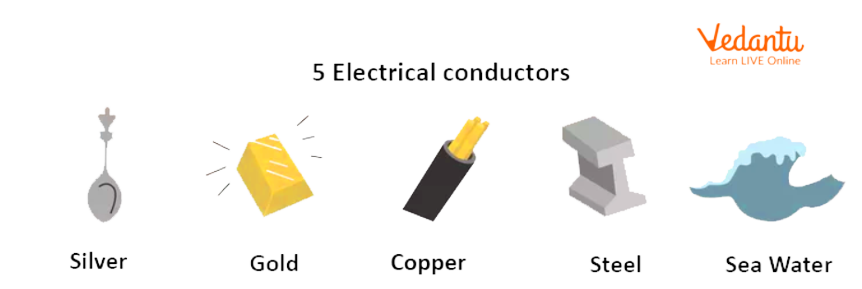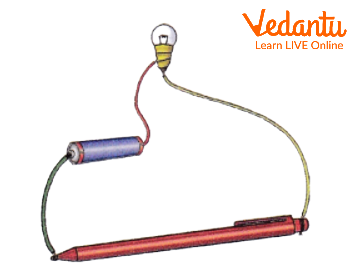




Conductors and Insulators: An Overview
We all know that our surroundings are made up of different types of materials such as iron, wood, plastic etc. All these materials have different structures, applications, and properties. The classification of these materials is done on the basis of various parameters like their quality, durability, nature etc. From these, one of the most significant and important parameters is conductivity.
Conductivity is defined as the ability of a material to allow the flow of current or electrons to pass through it. Different materials have different conductivities. Some materials have high conductivity such as metals like iron and copper while some materials have low conductivity such as wood, plastic, etc. The materials which allow the flow of electric current to pass through them are called conductors. The materials which do not allow the flow of electric current to pass through them are called insulators.
In this article, we are going to learn about the conductors and insulators, understand their properties, and how they differ from each other.

Electric Current
Conductors and Insulators
Conductors and insulators are the classification of materials on the basis of conductivity. Conductors are the materials which allow the flow of electric current and are used in electrical appliances whereas insulators are the materials which do not allow the flow of electric current and used in other products.
What is a Conductor?
The flow of electrons in a conductor is called the electric current. The force needed to make that current flow through the conductor is called voltage. Conductors are the device having a conduction greater than 103 s/cm. Basically, electrical properties of any material depend upon the electronic population within an atom as conductivity is the outcome of the motion of electrons among the energy bands.
When a charge is transferred to such a particle, it gets distributed across the complete surface of the particle or sample, which ends up in the movement of electrons in the object. The charges transferred to an electrical conductor distribute till the force of repulsion between electrons in areas of excess electrons is reduced to the minimum value. When such an object is brought in touch with another conductor, the charge gets transferred from the first conductor to the other until the repulsion because the charge is decreased. Some of the common conductors are metals, humans, animal bodies, and earth.

Examples of Conductors
What is an Insulator?
The materials which do not allow the electricity or the flow of electrons to pass through them easily are called insulators. If charge is transferred to a non-conductor or an insulator at a given location, the excess charge will remain at the initial location of charging. While insulators aren't useful for transferring charge, they do serve an important role in static experiments and demonstrations. Conductive objects are usually mounted on insulating objects. This arrangement of a conductor on top of an insulator prevents charge from being transferred from the conductive object to its surroundings.
In case of insulators, the conduction band is empty and there's a huge gap between the conduction band and valence band. It is around 9eV and therefore the conduction is less than 10-8 s/cm which suggests no conduction. They do not have electric charges or electrons that are free to move inside these materials as compared to others. Some of the common insulators are wood, steel, and plastic.

Examples of Insulators
Example of Conductor
As conductors have the ability to allow the flow of electric current to pass through them, they are used in all electronic devices and appliances. The most commonly and widely used conductors which are present in almost all devices include the following:
Copper
Aluminium
Mercury
Steel
Bronze
Graphite
Other conductors which are not commonly used but have strong conductive capacity are listed below:
Platinum
Brass
Silver
Gold
Example of Insulator
As insulators do not have the ability to allow the flow of electric current to pass through them, they are used in other daily products such as furniture, cloths, storage boxes etc. The most commonly and widely used insulators include the following:
Rubber
Glass
Wood
Cotton
Cloth
Plastic
Other insulators which are not commonly used but have strong inductive capacity are listed below:
Fibreglass
Paper
Porcelain
Ceramics
Quartz
Diamond
Difference Between Conductor and Insulator
Application of Conductor
Conductors are used in all electronic devices, equipment, and machines which work on electricity. Some daily use applications of conductors include the following:
Iron which contains metal plates.
Television, refrigerator contain different metals for conduction.
Machines which run on electricity are made of conductors.
Wires are made of conductors for the proper flow of electricity.
Application of Insulator
As insulators restrict the flow of electric current, they are used in devices where the flow of current needs to be controlled. Some of the applications of insulator include the following:
In an electric circuit to control high voltage current.
To protect equipment from electrical shocks.
To improve the performance of the devices.
Conductor Diagram
The easiest circuit diagram of a conductor is given below:

Circuit Diagram of a Conductor
In the above circuit diagram, the bulb glows because the key is a conductor as it is a metal and allows the flow of electric current to pass through it which ultimately glows the bulb.
Insulator Diagram
The easiest circuit diagram of an insulator is given below:

Circuit Diagram of an Insulator
In the above circuit diagram, the bulb does not glow because the pen is made up of plastic which is an insulator and does not allow the flow of electric current to pass through it.
Conclusion
Conductors are the devices which allow the flow of electric current to pass through them and insulators do not allow the flow of electric current to pass through them. Examples of conductors include copper, aluminium, and steel. Examples of insulators include wood, glass, and plastic.
FAQs on Conductors and Insulators
1. Is water a conductor or insulator?
Pure water is not a conductor but an excellent insulator. As the pure water does not contain any impurities, there are no free electrons. Thus, it does not allow the flow of electric current to pass through it and hence act as an insulator. But on the other side, in case of tap water, rainwater and seawater contain innumerous impurities like Na, Na+, Ca, Ca2+, and Mg, Mg2+ ions. Since these are charged when they are present in water, electricity can flow through the liquid.
2. What are the different types of conductors?
There are three varieties of conductors, namely, good conductors, semiconductors, and non-conductors. Non-conductors are also termed as insulators. Almost all the metals are good conductors of electricity as they permit transferring the electricity with very little resistance through them. For example, graphite is a good conductor of electricity. Semiconductors are those materials which have the sensitivity against electricity between good conductors and insulators. Thus, semiconductors are non-metals and have restricted electrical conductivity. A resistor is a little electronic device which resists and reduces the electrical current and provides the electricity to the electrical or electronic goods in a very controlled manner.
3. What is an electrical insulator?
Electrical insulators are the materials that don't permit free flow of electrical currents or charges. The Electrical insulator materials provide little or no freedom for the electrons to drift from atom to atom. Thus, electrical insulators are a poor conductor of electricity. Electrical insulators are extremely helpful at home, offices, streets, etc. They're employed in electrical appliances and instrumentation. Since the electrical insulator materials bind the electrons tightly, it prevents the electrons from floating from atom to atom. Thus, they prevent the conduction of electric charges.












